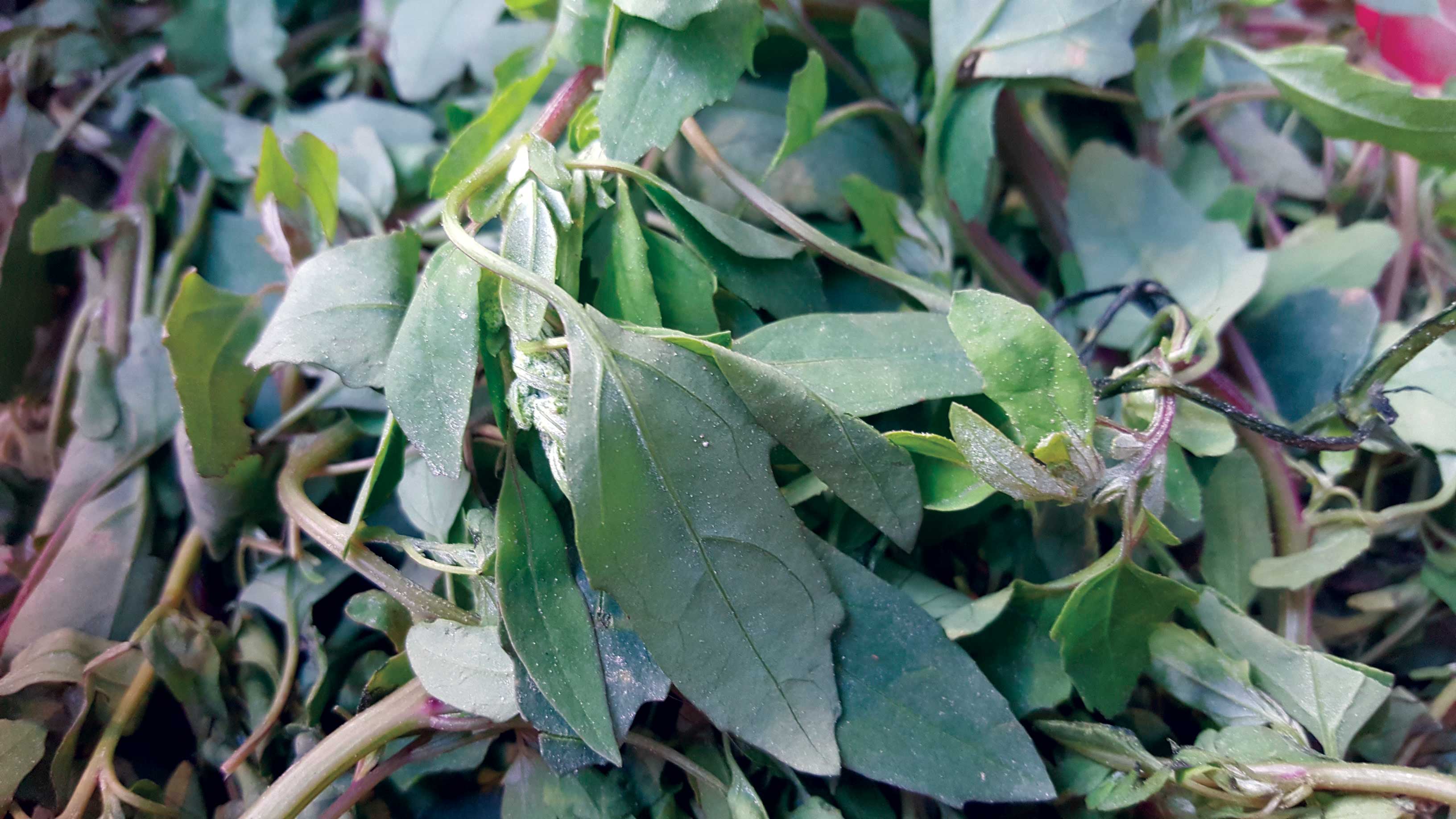Nepal, though a small landlocked country, is full of cultural and natural diversity. Along with that, Nepalese food is gaining more popularity even abroad due to the variety of dishes and their uniqueness.
Growing up, home-cooking for me meant my family’s Tamang dishes, one of my favorites being dhindo with local chicken meat and our all-time favorite, gundrukko aachar.
Dhindo is a traditional food made by cooking cornmeal (makaiko pitho), millet flour (kodoko pitho), or buckwheat flour (phaaparko pitho) with water. To prepare this dish requires real effort. My mother uses a copper pot and a wooden spoon, which she brought from her village years ago. Boiling water is the first step to make dhindo, after which you need to slowly add in the flour. Make sure there are no lumps in the mix. I can see how much energy and power it needs by seeing my mother’s constant stirring of the mix. I can’t even stir that wooden spoon once it is stuck in the thick mixture. Dhindo is ready when the porridge starts separating from the side of the pot. It is delicious when steaming hot, and best served with meat, vegetables, and typical homemade preserved spinach called gundruk, which is preserved leafy vegetables that goes well with dhindo. Gundruk is not only popular among Tamang families,but also with other Nepalis, both in the country and outside. If you’d like to try it, here is a simple recipe you can use to make gundruk at home:
• First collect some leaves of radish or spinach, and wash them.
• Let them dry for at least one day.
• Wash those dried leaves again and put in a container.
• From the second day the greens may start to produce some bubbles: leave for around one week.
• After one week, take out the preserved leaves and dry in the sun.
• Finally, your gundruk is ready.
You can make pickle or soup from the gundruk. I, too, have made gundruk as taught by my mother at home, which was good enough to impress her. When my mom starts to cook this dish, I don't go anywhere, but just sit and watch her. No, she doesn’t need my help, because she knows well that I’m not as good a helper as I am a cook, making a mess most times. In our village in the district of Kavre, our parents used to eat dhindo with meat, gundruk, and saag (spinach), and finish it off with homemade yogurt; if we add some water to the yogurt,then it becomes mahi. And, they had brought the knowledge to prepare these beautiful dishes to Kathmandu, too. The local chicken meat is a bit different from the chicken raised on farms. It doesn't have much meat, but what it does have is lots of flavor that comes from its bones and skin. To enjoy its real and full flavor, we have to make more of a liquid-based dish, not just make gravy, or fry them. First, slowly fry the meat in oil with onions in a pressure cooker. For spices, you can use ginger garlic paste, black pepper, and garam masala. Then,add some tomatoes to the spices and meat in your cooker. Lastly, add water as per your need, or amount of meat, and cover with the lid. Let it cook for about 20-25 minutes. Now, your chicken is ready. For saag, just fry with a little bit of oil, adding some fenugreek.
We usually eat dhindo when all our family members are together, because the actual flavors come out better if it is eaten with our loved ones. When it comes to Nepali food, you will have to say goodbye to your fork and spoon, and use your hand to enjoy the meal.










